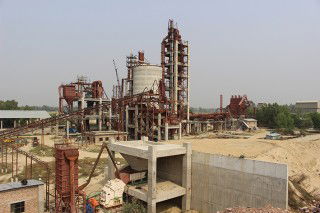Lafarge Canada and TransAlta Corp have entered into an agreement to advance low-carbon concrete projects in Alberta with a project to repurpose landfilled fly ash.
Landfilled fly ash must first go through a beneficiation process to be used in concrete. This project will utilise the Ash-TEK Ponded Ash Beneficiation System (PABS) technology, which consistently produced high quality ash during trials and has proven to have a low carbon footprint and an economical operating cost. Lafarge plans to deploy this unique approach to the process, removing moisture from the ash, milling it, and removing excess carbon, ensuring that it meets regulatory standards and market expectations.
“Driving innovative and sustainable initiatives is a key part of our business in Alberta and across Western Canada,” said Brad Kohl, president and CEO, Lafarge Canada (West). “There is great potential in repurposing materials across the construction value chain. Transforming landfilled material, such as fly ash, into a usable product for construction, is a win-win solution for all of us.”
“Our role in this project demonstrates TransAlta’s commitment to supporting innovative solutions for our customers that reduce their environmental footprints and meet their ESG goals. Using fly ash to make concrete creates a valuable opportunity to recycle one of the largest waste streams in North America. It’s a great complement to the zero-emissions electricity we are currently providing to Lafarge from our wind platform in Alberta,” added Blain van Melle, TransAlta Corporation’s executive vice president, Alberta Business.
Geocycle, a leading provider of sustainable waste management services worldwide, and Lafarge’s subsidiary in Canada, will also join the initiative. “Landfilled fly ash sometimes has too much carbon, which affects how much air there is in the concrete. Once we can treat and separate that carbon, then the fly ash is ready to be used (up to 25 per cent standard replacement) in place of cement,” commented Sophie Wu, head of Geocycle, North America.
